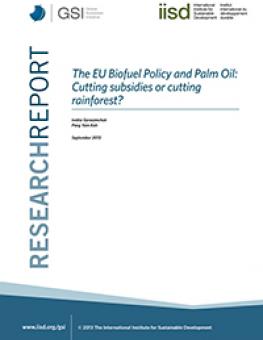
The EU Biofuel Policy and Palm Oil: Cutting subsidies or cutting rainforest?
The report seeks to address one of the blind spots in biofuel policy making, namely the increased use of palm oil in biodiesel produced and consumed in the European Union.
According to Oil World data, the EU biofuels industry has increased its use of palm oil as biodiesel feedstock by 365 per cent from 2006 to 2012, from 0.4 to 1.9 million tonnes per year. The additional demand can be linked primarily to the growth in biodiesel production stimulated by government policies during the same period. If the EU does not cut its current subsidies to biodiesel, it may, in an indirect way, lead to the cutting down of more rainforests, the conversion of more forest and peat land for palm oil plantations, and the emission of more carbon into the atmosphere.
Participating experts
You might also be interested in
The Cost of Fossil Fuel Reliance
Government support for fossil fuels reached at least USD 1.5 trillion in 2023, new data shows.
Increased Support Needed to Achieve India's Clean Energy Goals
India is on track to achieve many of its 2030 clean energy goals but needs to step up government support measures to accelerate the deployment of offshore wind, electric vehicles, and green hydrogen, according to a new report.
Ending Export Credits for Oil and Gas: How OECD countries can end 2024 with a climate win
For a year now, Organisation of Petroleum Exporting Countries (OECD) governments have been negotiating an agreement that could put an end to oil and gas export finance. Following the acrimony in Baku, this would be a very real way for the OECD to show policy coherence, respond to calls from the poorest countries to stop subsidizing fossil fuels, and shift public finance to solutions.
Fossil Fuel Production, Renewable Energy, and Subsidy Reform in Nationally Determined Contributions 3.0
This policy brief provides an analysis of the critical benchmarks and recommendations necessary for aligning nationally determined contributions (NDCs) with the 1.5 °C target.